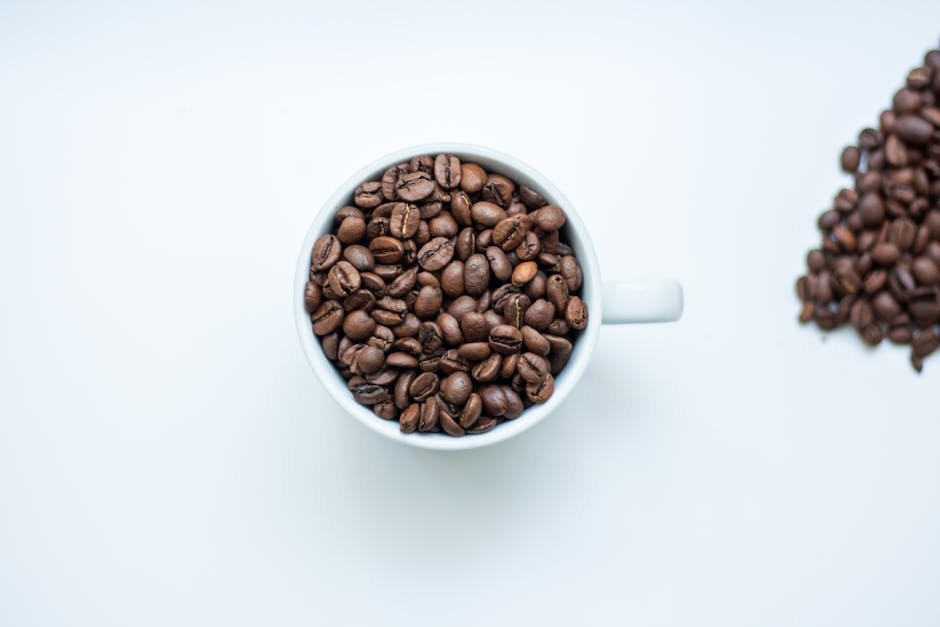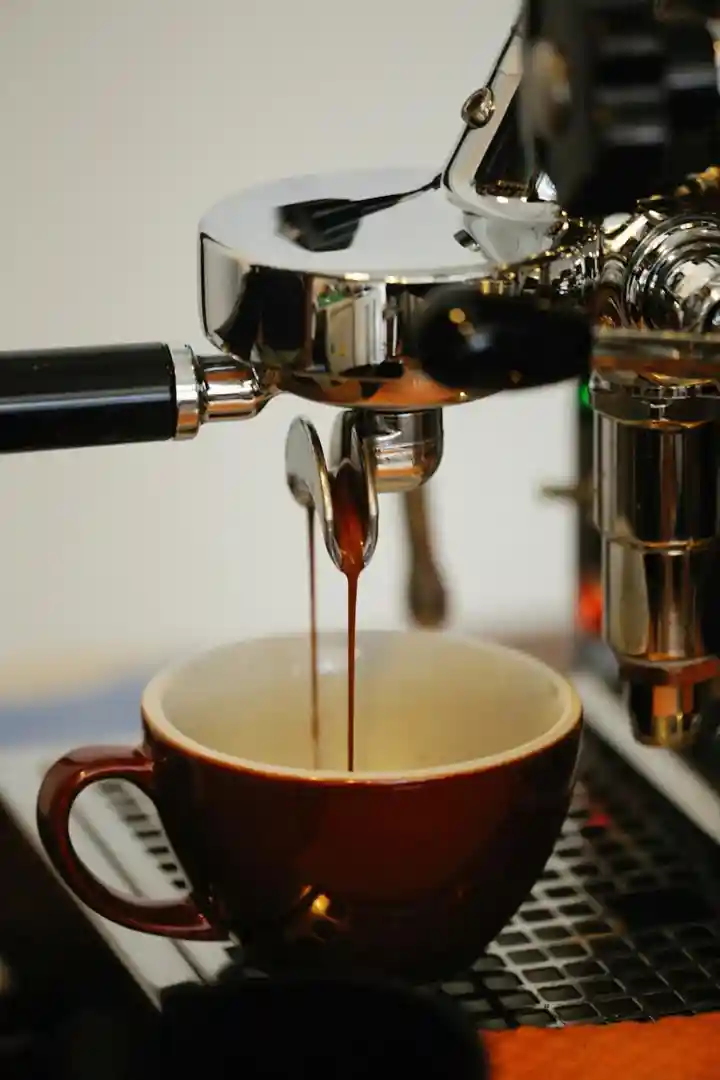
6 Ways Specialty Coffee Brands Build Loyalty and Stand Out
Discover how top specialty coffee brands create lasting loyalty through storytelling, sourcing, and community connection. Real tips from 6 industry experts.

When it comes to coffee, different types of arabica coffee beans are esteemed for their refined flavors and distinct characteristics. Arabica beans, a favorite for their sweet and aromatic taste, thrive in tropical climates near the equator, primarily at higher altitudes. This variant, known for its delicate and nuanced flavor profiles, offers a delightful journey for coffee lovers seeking variety.
Here’s a quick overview of the popular cultivars that you might encounter:
Eager to explore these distinct cultivars further? Keep reading to dive deeper into arabica coffee and find the unique flavors they offer to your cup!

Basic different types of arabica coffee beans glossary:
Arabica coffee beans come in a variety of types, each offering unique flavors and characteristics. Let’s explore some of the most notable ones:
Typica is one of the oldest and most widespread arabica coffee bean varieties. It sets the standard for quality, producing beans that are sweet and mild with notes of chocolate and nuts. Typica plants are known for their classic conical shape and, although they yield less fruit, the quality of the coffee is exceptional.
Bourbon is another significant variety with a rich history. Developed on the island of Bourbon (now Réunion) in the Indian Ocean, this cultivar is known for its sweet, well-rounded flavor profile. It often includes hints of brown sugar, cherry, and peach. Bourbon trees yield about 20-30% more fruit than Typica, making it a favorite among coffee producers.
Geisha, sometimes spelled Gesha, is a rare and highly prized variety originally from Ethiopia. It gained fame in Panama for its exceptional flavor profile. Geisha coffee is light and floral, with tea-like qualities and bright acidity. Its unique taste and high production costs make it one of the most expensive coffees in the world.
Caturra is a natural mutation of the Bourbon variety and was first discovered in Brazil. This cultivar is appreciated for its higher yield and compact growth, making it easier to cultivate. Caturra coffee offers a vibrant and bright flavor, similar to Bourbon but with a zesty twist. It thrives best in Colombia and other parts of South America.
A cross between Caturra and Mundo Novo, Catuai is known for its high yield and resilience. Originating in Brazil, this variety is popular in Central America, especially Honduras. Catuai coffee has a sweet, nutty flavor with notes of brown sugar and mild, cooked fruit. However, it requires careful attention and fertilization to thrive.

Each of these different types of arabica coffee beans contributes to the diverse and rich world of coffee. Whether you prefer the classic taste of Typica, the sweetness of Bourbon, the exotic notes of Geisha, or the vibrant flavors of Caturra and Catuai, there’s an arabica variety waiting to be discovered.
Typica is a classic in the coffee world. Known for its sweet and mild flavor, it often features notes of chocolate and nuts. This variety has a distinct conical shape, with a main trunk and slanted secondary trunks. Typica’s low yield is a trade-off for its high-quality beans, making it a favorite among those who value flavor over quantity.
Bourbon coffee has a sweet profile that delights the senses. With notes of brown sugar, cherry, and peach, it’s no wonder this variety is so popular. Originating from the island of Bourbon (now Réunion), it holds historical significance as a parent to many other varieties. Bourbon trees yield 20-30% more fruit than Typica, offering a balance between quality and quantity.
Geisha, originating from Ethiopia, is a true gem in the coffee world. Known for its unique and floral flavor, this specialty coffee gained fame in Panama. Geisha’s light, tea-like qualities and bright acidity make it stand out. Its rarity and exceptional taste contribute to its status as one of the most expensive coffees globally.
Caturra is a mutation of the Bourbon variety, finded in Brazil. It offers a higher yield and compact growth, making it easier to cultivate. The flavor profile is vibrant and bright, similar to Bourbon, but with a zesty twist. Caturra thrives in Colombia and other parts of South America, providing a lively coffee experience.
Catuai is a successful cross between Caturra and Mundo Novo. Known for its high yield and resilience, it is popular in Central America, particularly Honduras. Catuai coffee is sweet and nutty, with notes of brown sugar and mild, cooked fruit. However, it demands careful attention and fertilization to flourish.

Each of these different types of arabica coffee beans brings something special to the table. Whether you enjoy the classic taste of Typica, the sweetness of Bourbon, the exotic notes of Geisha, or the vibrant flavors of Caturra and Catuai, there’s an arabica variety to explore and enjoy.
Ethiopian Heirloom varieties are landraces, meaning they have naturally adapted over time to their environment. Found mostly in Ethiopian forests, these varieties are celebrated for their exceptional flavor quality. They offer complex and varied taste profiles, often featuring floral, fruity, and spicy notes. These heirlooms are not only prized for their taste but also for their disease tolerance. Unlike many other Arabicas, Ethiopian Heirloom varieties can better withstand diseases, making them a sustainable choice for farmers.
Originating from Kenya, the SL28 variety is known for its bright acidity and vibrant flavors. This variety thrives in the highlands of Kenya, where it benefits from the rich, volcanic soil. SL28 is beloved for its drought resistance, which allows it to survive in less-than-ideal growing conditions. Coffee from this variety often features a rich, fruity profile with notes of citrus and berry, making it a favorite among coffee enthusiasts who enjoy a lively cup.
Developed in Colombia, Castillo is a modern marvel in the coffee world. Bred for its disease resistance, especially against coffee rust, Castillo has become a staple in Colombian coffee farms. This variety offers a high yield, making it economically beneficial for farmers. Despite its resilience, Castillo does not compromise on flavor. It delivers a smooth, balanced cup with hints of caramel and chocolate, showcasing the best of Colombian coffee.

These specialty Arabica varieties each bring unique qualities to the coffee landscape. Whether it’s the rich history of Ethiopian Heirloom, the vibrant flavors of SL28, or the resilience and balance of Castillo, there’s a world of flavors to find.
Choosing the best Arabica coffee variety is like picking a favorite song—it’s all about personal taste. Some coffee lovers might lean towards Ethiopian Yirgacheffe for its floral and citrusy notes, while others might prefer the smooth, chocolatey richness of Colombian Supremo. Both varieties are highly regarded, yet they offer distinct flavor profiles that cater to different preferences.
The world of Arabica coffee is vast and diverse, with over 120 species and thousands of cultivars. Ethiopia, the birthplace of Arabica, is particularly rich in diversity, boasting a wide range of unique and flavorful varieties. This abundance allows for endless exploration and findy for coffee enthusiasts.
Arabica coffee thrives in equatorial regions, where the climate is just right for its growth. Ideal conditions include high altitudes and consistent temperatures, which are found in countries like Ethiopia, Colombia, and Brazil. These regions provide optimal climates that contribute to the distinct flavors and aromas of Arabica coffee.
Whether you’re savoring a cup from the lush highlands of Ethiopia or the volcanic soils of Colombia, each sip offers a taste of its unique origin.
At Equipoise Coffee, the journey from bean to cup is more than just a process—it’s a commitment to quality and sustainability. Their dedication to ethical sourcing ensures that every coffee bean is traced back to its origin, providing fair compensation to farmers and promoting sustainable farming practices. This not only supports the communities that cultivate these beans but also improves the quality of the coffee itself.
What sets Equipoise Coffee apart is their unique roasting process. By specializing in small-batch roasting, they focus on bringing out the natural flavors of each bean. This precise method ensures a smooth, well-balanced cup without bitterness, allowing coffee lovers to truly appreciate the distinct characteristics of every variety. Whether you’re enjoying the floral notes of Ethiopian Yirgacheffe or the rich, chocolatey taste of Colombian Supremo, Equipoise Coffee offers a delightful experience in each sip.

Discover how top specialty coffee brands create lasting loyalty through storytelling, sourcing, and community connection. Real tips from 6 industry experts.

Discover the ultimate showdown between two beloved coffee brewing methods: the French press and Chemex. Explore how each technique caters to distinct palates, with the French press delivering bold flavors and the Chemex presenting a bright, clean taste.

Unlock the secrets to brewing the perfect cup of coffee with our comprehensive guide on using a coffee scale. Discover how precise measurements enhance flavor and consistency while eliminating bitterness.

Discover how water temperature plays a vital role in brewing the perfect cup of coffee. This article delves into the ideal temperature range of 195°F to 205°F for optimal flavor extraction, enhancing the enjoyment of high-quality beans.

Discover the world of curated specialty coffee bundles, perfect for enthusiasts seeking quality and craftsmanship. This article explores the benefits of ethically sourced, small-batch beans from brands like Equipoise Coffee, offering diverse flavor profiles that elevate your brewing experience.

Discover the art of manual brewing to elevate your coffee experience! This article explores various techniques like pour-over, French press, and AeroPress, revealing how they enhance flavor and your connection to every cup.

Discover how to balance productivity and rest with the perfect cup of coffee. This article explores the art of brewing high-quality coffee to enhance your work routine while promoting mindful breaks.

Transform your morning coffee ritual into a mindful experience! This article explores the importance of slowing down to appreciate high-quality beans, ethical sourcing, and small-batch roasting.

Discover the world of specialty grade coffee and what sets it apart for true enthusiasts. This article delves into the strict standards, exceptional flavors, and unique origins that define high-quality brews.